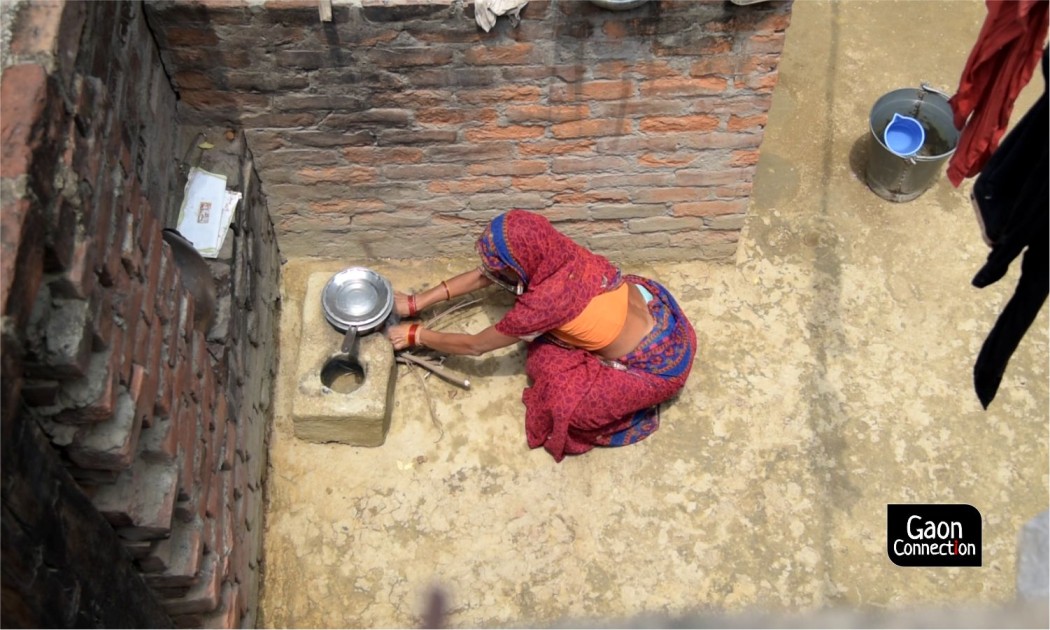Folk singer Sharda Sinha fondly remembers celebrating Basiya Pavan or Jur Sital — the Maithili New Year — at her native village Hulas in Bihar. This is a water festival celebrated by Maithilis in the Mithila region of India and Nepal, and falls on Mesh Sankranti (April 14). Jur Sital means freezing cold.
The festivities start with Satuani, a traditional harvest festival that celebrates the rabi crop. Sinha, who has been conferred with the Padma Bhushan, is from Bihar’s Supaul district, and told Gaon Connection: “On this day, we consume only the previous night’s basiya khaana (stale food). So, women would prepare kadhi-badi-bhaat and traditional Mithila fare — tarua-timan-tarkari-tilkor — on the night of Satuani, clean up the chulha (stove), and pack it off for the day.”
On Jur Sital, the kitchen would be closed. The stove goddess or chulha maharani was allowed to cool, cleaned, worshipped and given rest.
“But we could eat the food only after it had been offered to the household’s presiding deity,” said Sinha.
Mumbai-based Vibha Rani, writer, theatre artist, folk singer and actor who is a native of Madhubani in Bihar, recalled her household used to celebrate Satuani on April 13, and spend the entire night cooking delicacies including kheer, daalbhari, saadi poori and drumstick curry. “We would finish cooking by four or five in the morning, clean the kitchen and lock it for the day. The quantity was huge, because food was prepared not only for our household but also for guests visiting us during the day, and our neighbours,” Rani told Gaon Connection.
Staying cool
Sinha remembers how her grandmother used to store water in earthen, bronze, copper and brass pots the night before. “It was customary to sprinkle the same water on our maath (head), gaach (plants) and baat (street). The blessings would follow — jurail rahiye, thandaiyail rahiye [stay cool] — to help one beat the heat in the searing summer,” Sinha said.
In keeping with the meaning of Jur Sital, the water stored the previous night is said to have a cooling effect on those it is sprinkled upon.
Holi with a difference
Jur Sital is also called Nirayana Mesh Sankranti and Tirhuta New Year, and villagers sprinkle ‘old water’ from water bodies on each other. Thal-Kado, the silt that is a byproduct of the extraction process, comes in handy when playing Holi. People believe it lends them ample strength to tackle the heat of the summer.
“Houses and patios in the village are cleaned using the same old water, collectively sourced from the well or village pond. In the process, local water bodies are subjected to annual maintenance and desilted,” Eklavya Prasad, managing trustee of Megh Pyne Abhiyan, a charitable trust that works on water conservation, told Gaon Connection.
It is believed the application of this mud helps protect the skin from the scorching rays of the Sun, and against any ailments.
Kite-flying
Just like kite-flying is famous in Gujarat during Uttarayan or Makar Sankranti, it is a popular thing to do on Mesh Sankranti in Mithila too. “There used to be a ground in Madhubani called Guddi Gachi where a fair would be organised on Jur Sital and people of all age groups would congregate to fly kites. It was one of the most eagerly-awaited festivals,” recalled Rani. There would also be another event called Hoora-Hoori — a pig and buffalo would race each other much to the delight of a cheering crowd.
Also Read: Well, it is time for a well’s wedding. And the groom is … a banyan tree!
Jur Sital is celebrated as Maithil New Year in Bihar.
— Pradhan Mantri Fasal Bima Yojana (@pmfby) April 14, 2021
We wish a very Happy New Year to everyone in Bihar. #JurSital #atmanirbharkrishi #pmfbyforkisan pic.twitter.com/GdWzwR25Qj



















